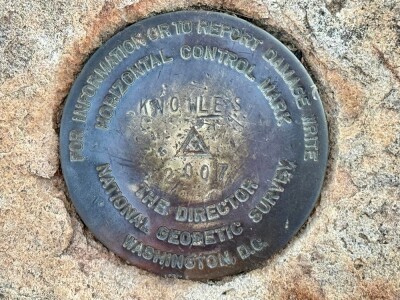On Aug. 29, Topcon Corporation of Tokyo announced its acquisition of Voxis Inc. The two companies have collaborated for several years on the Topcon GLS-1000 laser scanner that has been seen at industry trade shows for a couple of years. The offering of a complete product package is now a reality for Topcon, as is the company’s official entrance into the U.S. scanning market with Voxis in arm as a wholly owned subsidiary.
Scott Langbein, product marketing manager for Topcon, says the GLS-1000 has been released internationally in Japan and countries of Europe but hasn’t progressed in the United States due to a stall in a solid software component. “The scanner by itself—without what we felt was needed (accompanying software)—would not succeed. Scanning is software-intensive. Now we’ve got the ScanMaster at release phase [and]we’re ready to pair it up with the hardware,” he says. The hardware unit now offered to the U. S. market is a slight variation of the previously seen hardware unit with only minor technical differences such as coloring and plates.
But why the delay in market launch if they’ve been working with Voxis for some time? “I think it indicates our internal preparedness,” Langbein says. “[We’re] ready, willing and able to take on a full system.” So what can a potential buyer find in the new hardware unit? “We’re pushing the compact physical design—an all-in-one design,” Langbein says. Batteries, controls and the user interface/control panel are all on the system allowing users to define and conduct a scan completely onboard. “So it basically has the same field functionality as a total station in that one person opens a case, places it up on a tripod using a regular tribrach, and it has total station batteries located on the device inside big battery doors,” Langbein says. Additionally, the SD memory card onboard, he says, is unique to some of Topcon’s competitors that require other devices such as a PC or external power supply. Other aspects of the GLS-1000 are its Class 1 infrared eye-safe laser, which, Langbein says, doesn’t disturb any moving traffic and can be used in areas such as airports without requiring any extra precautions for passersby.
While the engineers have focused quite a bit on physical design, Langbein says they’ve “not sacrificed anything in distance range or accuracy and still been able to maintain that Class 1,” adding that the perception is that a Class 1 laser is weaker. “We maintain four-millimeter [accuracy]throughout the entire range from one to 150 meters (at 18% reflectivity),” he says. “That’s uniquely handled from the mechanics of our system.” The 35-pound GLS-1000 unit also offers a built-in 2.0 megapixel digital camera, wireless LAN and USB connectivity, and a 3,000 points-per-second scan rate. Voxis President Jerry Dimsdale adds that it’s hard to design a system while keeping up with what everyone else is doing, but he says that customers have reported seeing a lot less noise on scans with the GLS-1000. “We’re continually working on improving that,” he says. “One thing I’ve also focused on is maintaining a level of accuracy and a minimum of noise. I think in general it’s much more important to have quality than a large quantity.”
This approach speaks to what Topcon has coined “Precise Scan Technology,” a method of collection that uses time-of-flight measurement combined with phase-based technology. Dimsdale says there are patents pending on the method and that the GLS-1000 is essentially a time-of-flight scanner. “You basically convert pulses into a set of ringing structures,” he says. “The benefit is that we can find the delay time more accurately over a range of amplitudes. Probably the dominating characteristic is a better accuracy characteristic. We can also go to a much higher sampling rate.”
This technical description comes from a true engineer at heart. Dimsdale’s background includes founding Cyra Technologies in 1993 with pioneer Ben Kacyra. He worked for Cyra’s later parent, Leica Geosystems, from 2001 to 2002, founding Voxis Inc. in 2003 as an innovator in the design of precision high-resolution motion systems including precision instrumentation. He joined forces with Topcon in 2005.
Now, Dimsdale says, “We [Voxis and Topcon] have a lot of synergy in terms of the goals we’d like to achieve.” These include competing in a market where laser scanner hardware collection speed will increase, resolution will increase, costs and sizes of instruments will come down, and standards will hopefully be developed in short time. “There are fundamental differences with the phase-based system that have been obscured because there haven’t been standards for making those evaluations,” Dimsdale says. “I think a lot of the work done by the ASTM to develop standards will have a big impact on the way people evaluate them.”
As for correlated software improvements, Dimsdale says he looks forward to how fast a user can put data points into the software.
But today, the joint team of Voxis and Topcon is excited to market the complete scanning package under the Topcon label including its new software suite, ScanMaster. ScanMaster is the resting spot for the GLS-1000 unit, according to Langbein. The company has gone through three or four software products in developing a robust-enough package for the scanner. “ … The scanner is a much more data-demanding environment than photogrammetry or the Imaging Station,” he says, speaking of Topcon’s GPT-7000i product and its scanning, robotic, reflectorless imaging total station. ScanMaster’s ability to stream a live video feed from the GLS-1000 scanner aids users to set up the desired scan area. It also streamlines the process of aligning data captured from multiple occupations into a single coordinate system by quick traverse and backsight capabilities.
Voxis is now a wholly owned subsidiary of Topcon retaining its structure and location as well as Dimsdale’s position as president.
The Topcon GLS-1000 laser scanner is expected to be ready for delivery through Topcon Positioning Systems by late fall. Six units are in-house today, and the first three slotted are proposed to be out by the first of October. The package will run between $80,000 to $85,000. More details can be found soon at the company’s Web site and at SPAR 2009.





